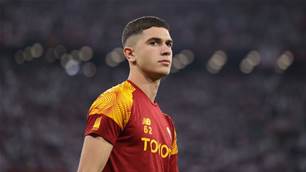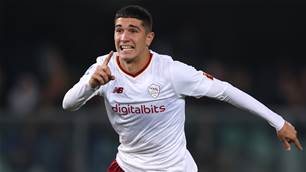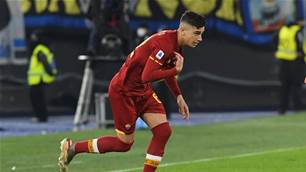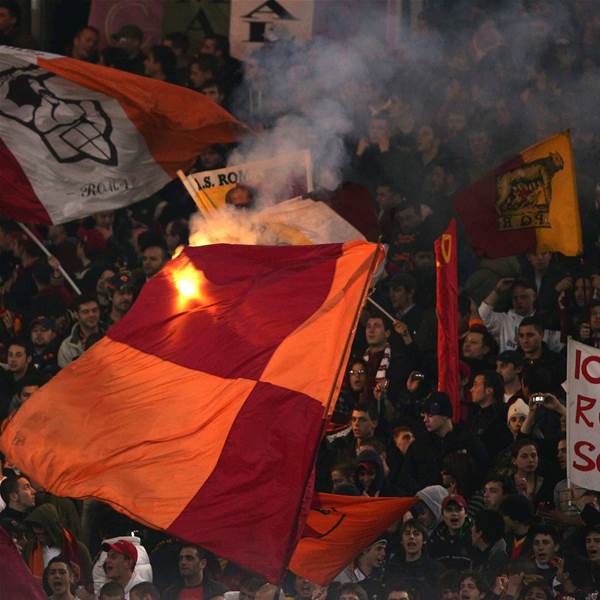The ugly events that marred Man United's tie with AS Roma will turn the spotlight on Italy's hardcore 'Ultra' fans.
Ultra groups seek to distance themselves from hooliganism, but while the majority do restrict their support to passive behaviour, the truth is that they often provide a valuable cloak of anonymity to violent fans.
The movement began in the late 1960s, when Italian football clubs reduced their ticket prices, leading to an increase in the number of supporters between the ages of 15 and 25.
Their self-imposed doctrine is to provide their teams with a '12th man', and they believe they influence games with their non-stop chanting and banners.
However, although many - if not most - matches in the Italian league pass without incident, the threat of violence often appears to be on the cusp of everything the Ultras do.
In the Rome derby three years ago, Francesco Totti was beckoned over by two Ultra chiefs who issued demands to the Giallorossi captain, giving some indication of the power they hold.
Over the years they have won crisis talks with players, had matches called off and been privy to any number of 'perks', including season tickets and free air travel.
The reason for this - put simply - is because of what they could do if they did not get their own way.
The 'Curva' - the name given to the section of a stadium controlled by the Ultras - packs together many thousands of hard-core fans, and is an area into which even the carabinieri, Italy's military police, often fear to tread.
Given the reputation of the police force in Italy - who were criticised for their heavy-handed approach in quelling Wednesday's disturbances - it is telling that they generally avoid direct confrontation with the Ultras.
When they do clash, the battles are often political, with the carabinieri, known for their for their hardline right-wing outlook.
And some blame the force's inexperience and poor training (many of their number are young men serving their year's military service) for the frequently brutal treatment of fans.
This came to a head earlier this season when a policeman was killed during the Sicilian derby between Catania and Palermo, and stringent measures were put in place by the Italian government to stem the growing tide of violence.
A ban was also imposed forbidding contact between Ultras and clubs, and limitations were placed on large groups of travelling fans.
In addition, some Serie A clubs were banned from playing at their stadiums until safety guarantees could be given.
However, despite these new measures, the scenes at the Stadio Olimpico on Wednesday night show that a far-reaching and viable solution to the problem is still a long way off.
The movement began in the late 1960s, when Italian football clubs reduced their ticket prices, leading to an increase in the number of supporters between the ages of 15 and 25.
Their self-imposed doctrine is to provide their teams with a '12th man', and they believe they influence games with their non-stop chanting and banners.
However, although many - if not most - matches in the Italian league pass without incident, the threat of violence often appears to be on the cusp of everything the Ultras do.
In the Rome derby three years ago, Francesco Totti was beckoned over by two Ultra chiefs who issued demands to the Giallorossi captain, giving some indication of the power they hold.
Over the years they have won crisis talks with players, had matches called off and been privy to any number of 'perks', including season tickets and free air travel.
The reason for this - put simply - is because of what they could do if they did not get their own way.
The 'Curva' - the name given to the section of a stadium controlled by the Ultras - packs together many thousands of hard-core fans, and is an area into which even the carabinieri, Italy's military police, often fear to tread.
Given the reputation of the police force in Italy - who were criticised for their heavy-handed approach in quelling Wednesday's disturbances - it is telling that they generally avoid direct confrontation with the Ultras.
When they do clash, the battles are often political, with the carabinieri, known for their for their hardline right-wing outlook.
And some blame the force's inexperience and poor training (many of their number are young men serving their year's military service) for the frequently brutal treatment of fans.
This came to a head earlier this season when a policeman was killed during the Sicilian derby between Catania and Palermo, and stringent measures were put in place by the Italian government to stem the growing tide of violence.
A ban was also imposed forbidding contact between Ultras and clubs, and limitations were placed on large groups of travelling fans.
In addition, some Serie A clubs were banned from playing at their stadiums until safety guarantees could be given.
However, despite these new measures, the scenes at the Stadio Olimpico on Wednesday night show that a far-reaching and viable solution to the problem is still a long way off.
Copyright (c) Press Association
Related Articles

Roma and out: Want-away Aussie gun hunts EPL move

Volpato heading to World Cup despite Socceroos snub













